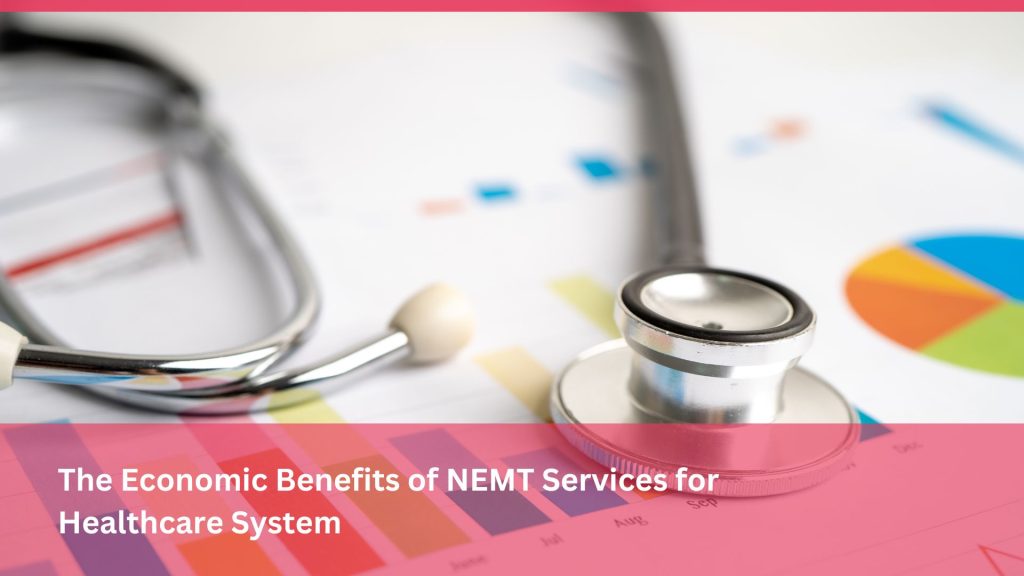New at Safr Care
The Economic Benefits of NEMT Services for Healthcare Systems

The Economic Benefits of NEMT Services for Healthcare Systems
Non-Emergency Medical Transportation (NEMT) services do more than bridge the gap between patients and healthcare facilities; they also contribute significant economic benefits to healthcare systems as a whole. By ensuring patients can access preventive care, follow-ups, and necessary treatments, NEMT services help reduce costly emergency interventions, hospital readmissions, and inefficiencies. This article explores how NEMT services generate economic value across the healthcare spectrum, supporting more sustainable, cost-effective, and patient-centered care.
Addressing Preventable Healthcare Costs
When patients cannot reliably reach medical appointments, health issues often go undiagnosed or unmanaged. Without early intervention, minor conditions can escalate into more serious—and more expensive—emergencies. NEMT services mitigate these risks by:
- Ensuring Timely Screenings and Check-Ups: Consistent access to routine exams catches health concerns before they become complicated or life-threatening.
- Promoting Preventive Care: Enabling patients to attend vaccinations, wellness visits, and screenings reduces the need for expensive emergency room visits or hospital stays.
- Supporting Chronic Disease Management: Regular transportation for follow-ups and therapy sessions leads to better medication adherence, stable conditions, and fewer urgent interventions.
By facilitating consistent care, NEMT services help curb escalating medical costs for both patients and healthcare systems.
Reducing Hospital Readmissions
Readmissions are a significant expense for hospitals and insurers, often stemming from patients not following post-discharge care plans or missing critical follow-up appointments. NEMT services address this issue by:
- Encouraging Treatment Adherence: Reliable transportation ensures patients receive recommended tests, treatments, and check-ups, reducing the likelihood of complications or relapse.
- Preventing Gaps in Care: Arranging timely rides to outpatient therapy, rehabilitation, or specialist visits supports stable recoveries and lowers readmission rates.
- Aligning with Value-Based Care Models: As healthcare shifts toward outcomes-based reimbursement, fewer readmissions translate into financial incentives and penalties avoided.
In this way, NEMT services not only protect patient health but also safeguard the financial health of healthcare institutions.
Optimizing Healthcare Resources
Missed appointments disrupt clinic schedules, reduce productivity, and lead to wasted resources. NEMT services minimize these inefficiencies by:
- Decreasing No-Shows: Patients who have dependable transportation are more likely to keep appointments, allowing providers to use their time effectively.
- Improving Clinic Flow: Predictable patient arrivals help maintain steady workflow, reduce wait times, and enhance the overall care experience.
- Enhancing Revenue Stability: Consistent patient attendance ensures providers meet service demand and maintain stable revenue streams, crucial for both private practices and larger healthcare systems.
By optimizing operational efficiency, NEMT services support a healthier bottom line for medical facilities and insurers alike.
Supporting Population Health and Equity
NEMT services also contribute to broader economic benefits by improving population health. When patients from all backgrounds—regardless of income, location, or mobility challenges—can access timely care, communities enjoy:
- Reduced Health Disparities: Reliable transportation helps level the playing field, ensuring that vulnerable populations receive consistent care and avoid preventable complications.
- Decreased Strain on Emergency Services: Fewer people resort to emergency rooms for routine or manageable conditions, freeing up resources for true emergencies.
- Long-Term Savings: A healthier population results in lower healthcare spending over time, benefiting public health budgets and social programs.
This emphasis on equitable access to care fosters more sustainable healthcare systems, capable of serving growing and diverse populations without escalating costs.
Embracing Technology and Innovation
As NEMT providers embrace technology—such as scheduling apps, GPS tracking, and route optimization tools—they can further enhance economic efficiency. These innovations lead to:
- Streamlined Operations: Automated booking, dispatch, and tracking reduce administrative burdens and human errors.
- Cost-Effective Routing: Intelligent route planning conserves fuel, vehicle wear, and time, ultimately lowering operational expenses.
- Enhanced Patient Satisfaction: Transparent communication, timely updates, and reliable arrival times boost patient confidence and retention.
This tech-driven approach helps NEMT services deliver even greater value to healthcare ecosystems.
Selecting a Quality NEMT Provider
The economic advantages of NEMT are maximized when healthcare systems and insurers partner with reputable providers. Companies like SafrCare exemplify the best practices in patient-centered transportation, offering:
- Skilled, Compassionate Staff: Trained professionals who understand patient needs and safety protocols.
- Diverse Fleet and Equipment: Vehicles accommodating wheelchairs, stretchers, and other medical necessities.
- Flexible Scheduling: Reliable pickup and drop-off times that adapt to patient and provider changes.
- Transparent Communication: Clear updates, alerts, and responsive customer support that enhance trust and efficiency.
Such partnerships help healthcare organizations realize the full economic benefits of NEMT services.
Conclusion
NEMT services do more than improve patient access to care; they also generate tangible economic benefits across the healthcare landscape. By reducing missed appointments, supporting preventive care, lowering hospital readmissions, and promoting operational efficiency, NEMT contributes to lower costs and better resource utilization. These outcomes align with the goals of value-based care models, ensuring that healthcare systems can thrive while delivering excellent, patient-focused services.
As healthcare systems continue to evolve, embracing NEMT services and forging strong provider partnerships can lead to a healthier population, more sustainable spending, and a more resilient, equitable healthcare environment for all.
